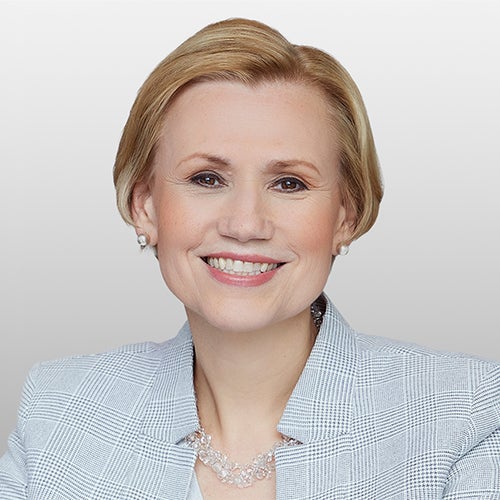With Coronavirus news and statistics impacting global markets, I still hold out hope that this contagion will be short-lived. I will be closely following upcoming data releases in China, Japan, the US, and the eurozone.
Recent data reveals the economic impact of coronavirus
Flash PMIs for a variety of countries are showing a coronavirus-related deterioration.
Last week both the S&P 500 and Nasdaq Composite indexes hit all-time highs mid-week before falling significantly at the end of the week on fears about the novel coronavirus (also known as COVID-19) impacting economic growth. Concerns about the contagion were amplified by the release of US Purchasing Managers’ Index (PMI) flash data for February.1 The Composite PMI dropped to 49.6 — its first time in contraction territory since the 2013 government shutdown. Manufacturing PMI fell to 50.8 from 51.5 in January, with the coronavirus outbreak being blamed. Services PMI was especially hard hit (falling to 49.4 from 53.4) and is now technically in contraction territory.
As of today, 24 February, we are seeing a global sell-off in equities and a rush to “risk off” asset classes such as gold and US Treasuries. Bond yields have dropped like a lead balloon on coronavirus fears. As of this writing, the 10-year US Treasury yield is at its lowest level since 2016, and the 30-year is at its lowest level ever.2 The 10-year/3-month yield curve has inverted, and the 10-year/2-year yield curve is close to inverting. I have found that, historically, the 10-year US Treasury yield has been a far better gauge of fear than the VIX — and the 10-year is telling us that there are serious concerns that this contagion will impact global growth.
Global headlines continue to cause concern
These worries are not unfounded. News and statistics released over the last few days are troubling. This contagion is spreading in a variety of countries, including South Korea, Iran, and Italy. The situation in Italy has caused the Catholic Church to cancel Mass in Milan, and has caused Austria to cancel trains going in and out of Italy. The World Health Organization is contemplating labeling this outbreak as a pandemic. What is particularly alarming is that younger, healthier people are contracting the disease, and some have fallen seriously ill. In addition, recent reports suggest the incubation period could be as long as four weeks.
And we continue to receive information indicating that businesses are being impacted. This is a classic exogenous shock. Flash PMIs for a variety of countries are showing a coronavirus-related deterioration. And more companies are warning that earnings will be negatively impacted by the COVID-19 outbreak.
In this environment, it is easy for investors to panic. Following are a few things for investors to remind themselves of:
- The 10-year Treasury does not have medical training. In other words, I am taking its yield drop and any resulting yield curve inversion with a grain of salt because the economic impact all depends on the lifespan of the contagion. I am concerned about the recent reports of rising infection rates and serious infections among otherwise healthy people. However, I still hold out hope that this contagion will be short-lived, echoing the views of International Monetary Fund Managing Director Kristalina Georgieva, who said last week that it’s too soon to make medical projections, but “we are still hoping that the impact will be a V-shaped curve” with a sharp decline in China and sharp rebound after the containment of the virus.3
- Policymakers will be as supportive as possible, and supportive policy can supersede decelerating growth in dictating the direction of risk assets. China has provided very significant stimulus, both fiscal and monetary, and is poised to provide more. And last week Federal Reserve (Fed) Chair Jay Powell made it clear that the Fed will “closely monitor” the situation, which I believe means it is ready and willing to offer “insurance cuts” if need be, just as it did last year as a preventive measure to stave off the negative economic effects of the US-China trade war. This should soften the drop, at least slightly, and certainly encourage a more robust rebound.
- The situation in China is already starting to improve. Infections have slowed. More factories are coming on-line. The work resumption rate is rising. It will take time to get back to full capacity, but in China the situation has been moving in the right direction.
Economic indicators to watch
We need to recognize that there are opportunities created by the current market environment. In general, stocks have moved upwards for many months without a significant correction — and there is a compelling argument to make that a correction is overdue. The current sell-off could be healthy and provide a buying opportunity, especially given the supportive policy backdrop. Because the situation in China is beginning to improve, Chinese equities and those global equities with significant exposure to Chinese revenues could represent a particularly attractive buying opportunity. And lower yields may have some positive effects, especially since they have pushed mortgage rates lower.
What’s critical is that we continue to follow economic data closely for indications of the economic impact of the coronavirus. Upcoming data releases to watch include:
- PMI data for China. We want to assess and confirm the view that the economic situation is improving there.
- Consumer Confidence Index. This will give us an opportunity to see whether American consumer sentiment is being negatively affected by concerns about the coronavirus.
- Eurozone Consumer Confidence and the Eurozone Industrial Confidence Indicators. These metrics are usually not followed closely, but I believe they take on heightened importance given that the virus is having a significant impact on northern Italy, and we will want to see how the contagion has affected both consumer confidence and business confidence in the euro area.
- Japan Industrial Production. Japan is on the front lines of the contagion; Japanese companies’ supply chains have been seriously disrupted. This will help gauge the impact of the coronavirus in Japan.
And, of course, we have to follow even more closely the policy response to this contagion, which I believe will be adequate and provide support for risk assets.






